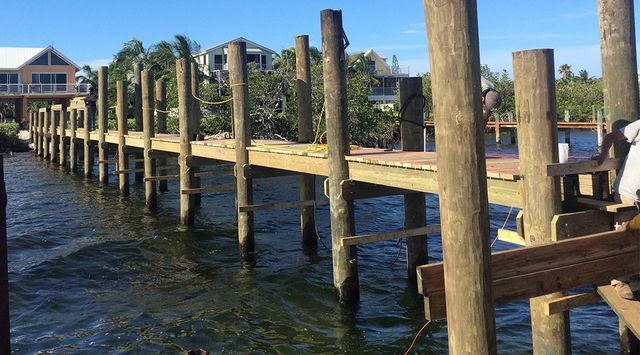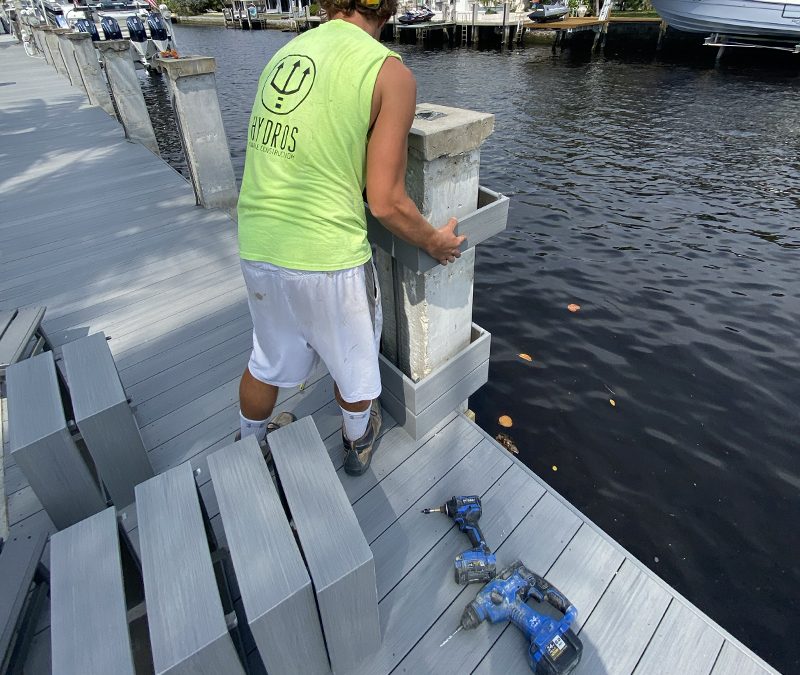DIY Tips for Simple Dock Repairs You Can Handle
Wiki Article
Reliable Dock Fixing Techniques: Guaranteeing Structural Honesty
Guaranteeing the structural honesty of docks via reliable fixing techniques is vital for the longevity and security of aquatic facilities. Subsequently, picking the right repair service materials, such as composite materials and corrosion-resistant alloys, is critical for toughness.Analyzing Dock Damage
Examining dock damage is a crucial very first action in making sure the architectural integrity and safety and security of any type of docking facility. This initial evaluation entails a comprehensive evaluation to identify both noticeable and surprise problems. Key facets to take a look at include the dock's foundation, pilings, outdoor decking, and equipment. Each component should be inspected for indications of wear, rot, rust, or various other types of deterioration that might endanger the structural honesty.Structural designers or certified examiners generally execute these assessments making use of specialized tools and techniques. For instance, undersea assessments might utilize finder equipment or from another location operated lorries (ROVs) to identify submerged damages. Over water, aesthetic evaluations are enhanced by utilizing wetness meters and other diagnostic devices to uncover underlying concerns not immediately visible to the nude eye.

Finding Fixing Materials
Picking the ideal repair service materials is a crucial action in the dock reconstruction process, one that directly influences the durability and performance of the fixed framework. Product choice should be driven by aspects such as environmental conditions, load-bearing demands, and compatibility with existing dock parts. Wood is a traditional option for docks due to its natural durability and visual allure. However, selecting the ideal type of wood, such as pressure-treated lumber or normally rot-resistant types like cedar or teak, is essential to endure marine atmospheres.In addition to timber, composite products are progressively popular because of their longevity and reduced upkeep requirements. Composites, commonly made from a blend of plastic and timber fibers, supply superb resistance to rot, bugs, and UV damages. For steel docks, selecting corrosion-resistant alloys such as galvanized steel or marine-grade aluminum is necessary to stop rust and ensure architectural integrity in saline water conditions.
Epoxy materials and marine-grade sealants are important for fixing fractures and securing joints, supplying a water-proof barrier and boosting the dock's total strength. By meticulously picking high-quality materials, dock fixings can accomplish resilient results, consequently protecting versus future destruction and ensuring risk-free, reliable usage.
Architectural Support Strategies
Effective architectural support methods are vital in guaranteeing the stability and durability of dock repair work. This approach is particularly effective for docks exposed to hefty loads or harsh environmental conditions.Another essential strategy is the application of fiber-reinforced polymers (FRP) These materials supply high strength-to-weight ratios and excellent resistance to deterioration, making them perfect for reinforcing wooden or concrete anchors. FRP can be used in strips or sheets and bound with epoxy resins to enhance structural honesty.
Supporting and anchoring systems also play a critical function in architectural reinforcement. Cross-bracing, using steel or wooden beam of lights, can combat side click here for info forces, reducing guiding and activity. Securing systems, such as helical piers or driven heaps, offer a stable foundation by moving tons to much deeper, extra stable soil layers.
Finally, the assimilation of load-distribution plates can aid disperse weight much more uniformly across the dock's surface area, reducing localized stress points. These methods collectively guarantee that anchors stay safe and robust, with the ability of standing up to the rigors of their operational environment.
Advanced Repair Techniques

An additional advanced method entails underwater welding, which permits repair work to be performed without the demand to dewater the location. This technique is specifically advantageous for addressing architectural problems in submerged dock components, making certain very little interruption to procedures. Boosted welding strategies, combined with robot systems, supply accuracy and integrity, consequently extending the lifespan of the dock.
In addition, cathodic protection systems are carried out to stop deterioration in metallic dock frameworks. By utilizing sacrificial anodes or impressed current systems, these strategies successfully mitigate the electrochemical procedures that lead to product degeneration.
Finally, advanced tracking modern technologies, such as structural health and wellness surveillance (SHM) systems, provide real-time data on the problem of dock structures. These systems make it possible for positive maintenance and timely treatments, ultimately ensuring the long-term architectural stability of the dock.
Maintenance and Prevention
Upkeep and avoidance are basic ideas that underpin the long life and safety of dock frameworks. Regular evaluations are critical, enabling early discovery of deterioration, potential weaknesses, and environmental impacts. A proactive method, entailing routine checks for rust, rot, and structural changes, mitigates pricey repair work and lengthens the dock's operational life.Safety nets need to include go to these guys applying protective coverings to metal parts to defend against corrosion and utilizing treated timber to resist decay. Furthermore, ensuring appropriate drainage and air flow can stop water build-up, which is a typical source of architectural destruction. Integrating top quality products and sticking to manufacturer standards throughout building and construction and repair work stages additionally play critical roles in improving sturdiness.

Training employees in dock upkeep best practices makes sure consistent application of safety nets. Leveraging technical advances, such as drones for assessments and sensors for real-time monitoring, can additionally boost maintenance initiatives. By prioritizing upkeep and avoidance, dock proprietors can ensure structural stability, operational safety and security, and affordable management over the dock's lifespan.
Conclusion
Finally, keeping the structural honesty of marine facilities demands extensive dock repair work techniques. Comprehensive examinations using advanced tools uncover both noticeable and hid damages, while the choice of suitable repair work products improves durability. Carrying out structural support techniques addresses stress and anxiety factors successfully. Advanced repair service techniques, coupled with regular upkeep methods, make sure the dock continues to be risk-free and functional under diverse environmental conditions. Embracing these approaches considerably lengthens the life-span and performance of aquatic framework.Making sure the find this structural integrity of docks with reliable repair techniques is critical for the longevity and safety of marine centers.Choosing the appropriate fixing products is a crucial step in the dock remediation process, one that straight affects the durability and efficiency of the fixed structure.Reliable architectural reinforcement methods are vital in making certain the security and durability of dock repair services. By prioritizing upkeep and avoidance, dock proprietors can make certain structural honesty, functional security, and economical management over the dock's lifespan.
In verdict, keeping the architectural stability of marine centers necessitates comprehensive dock fixing methods.
Report this wiki page